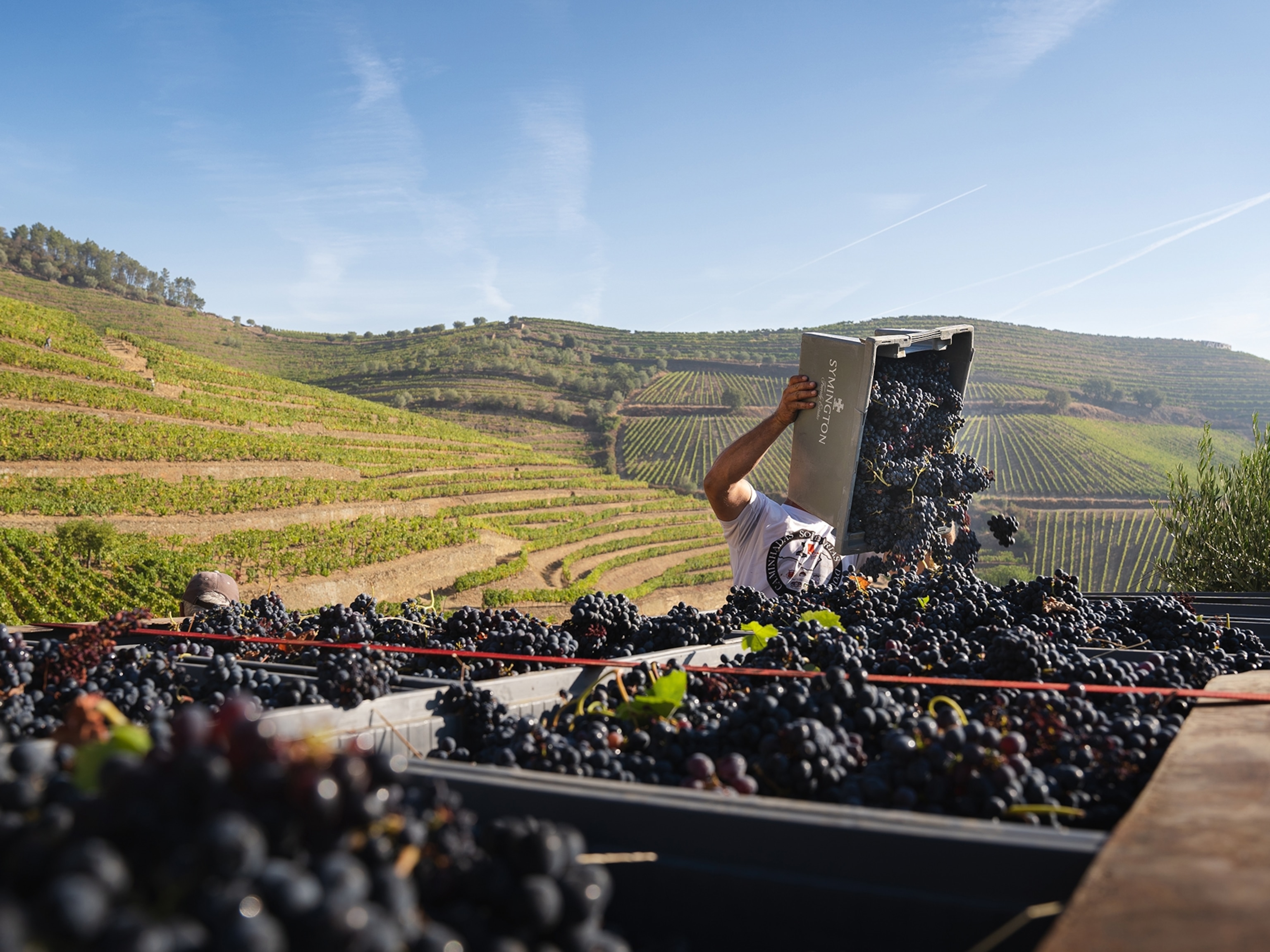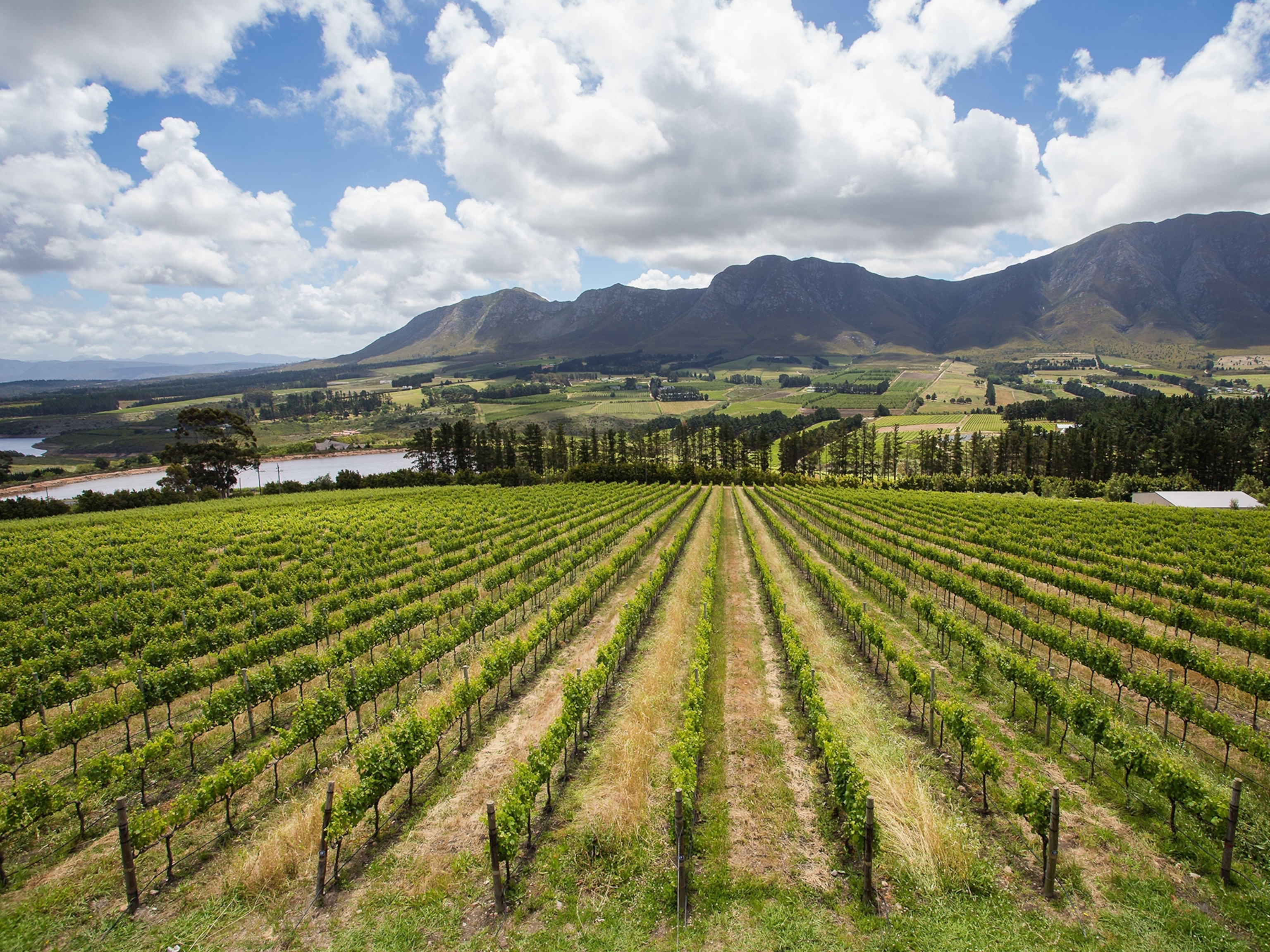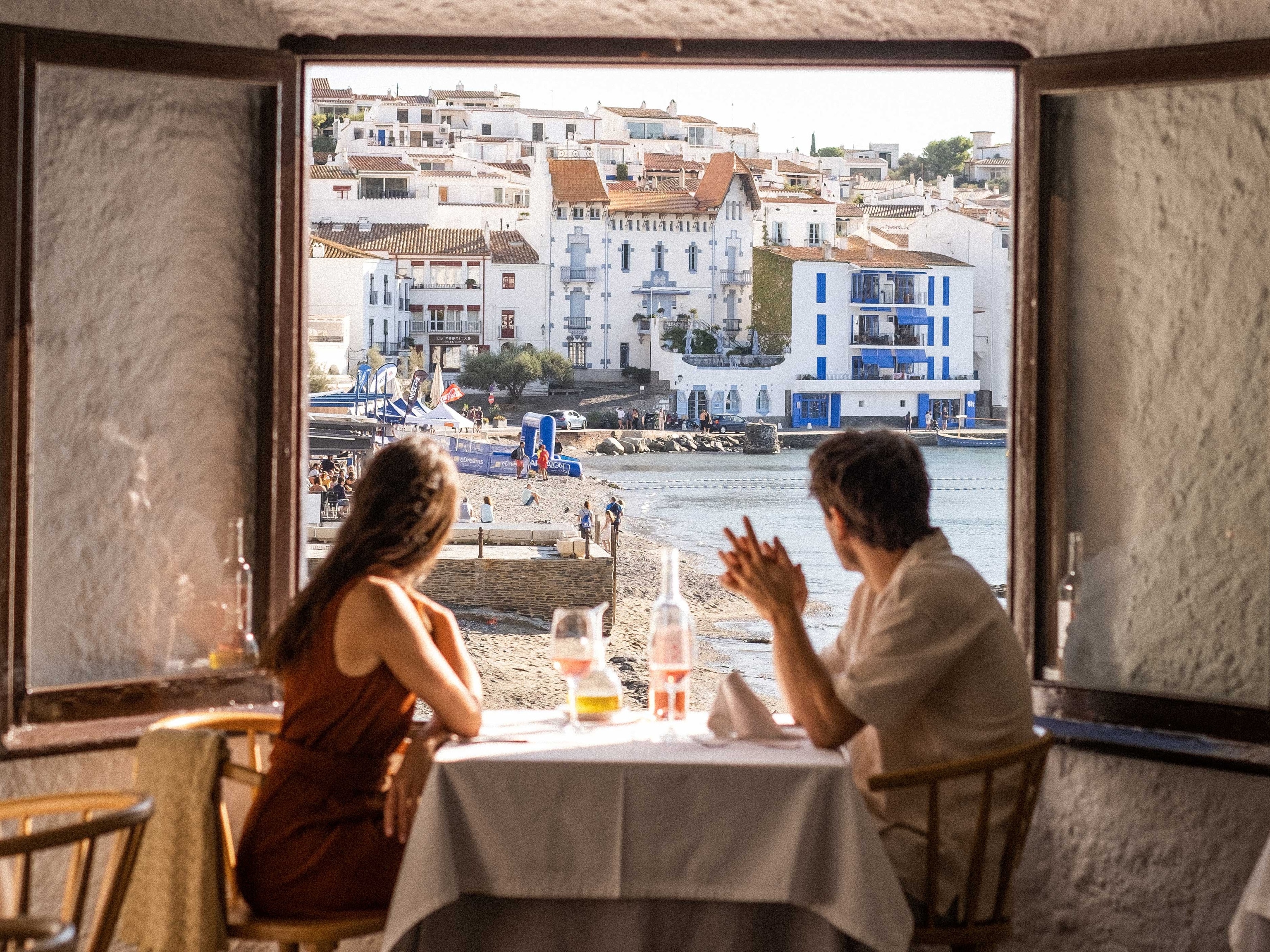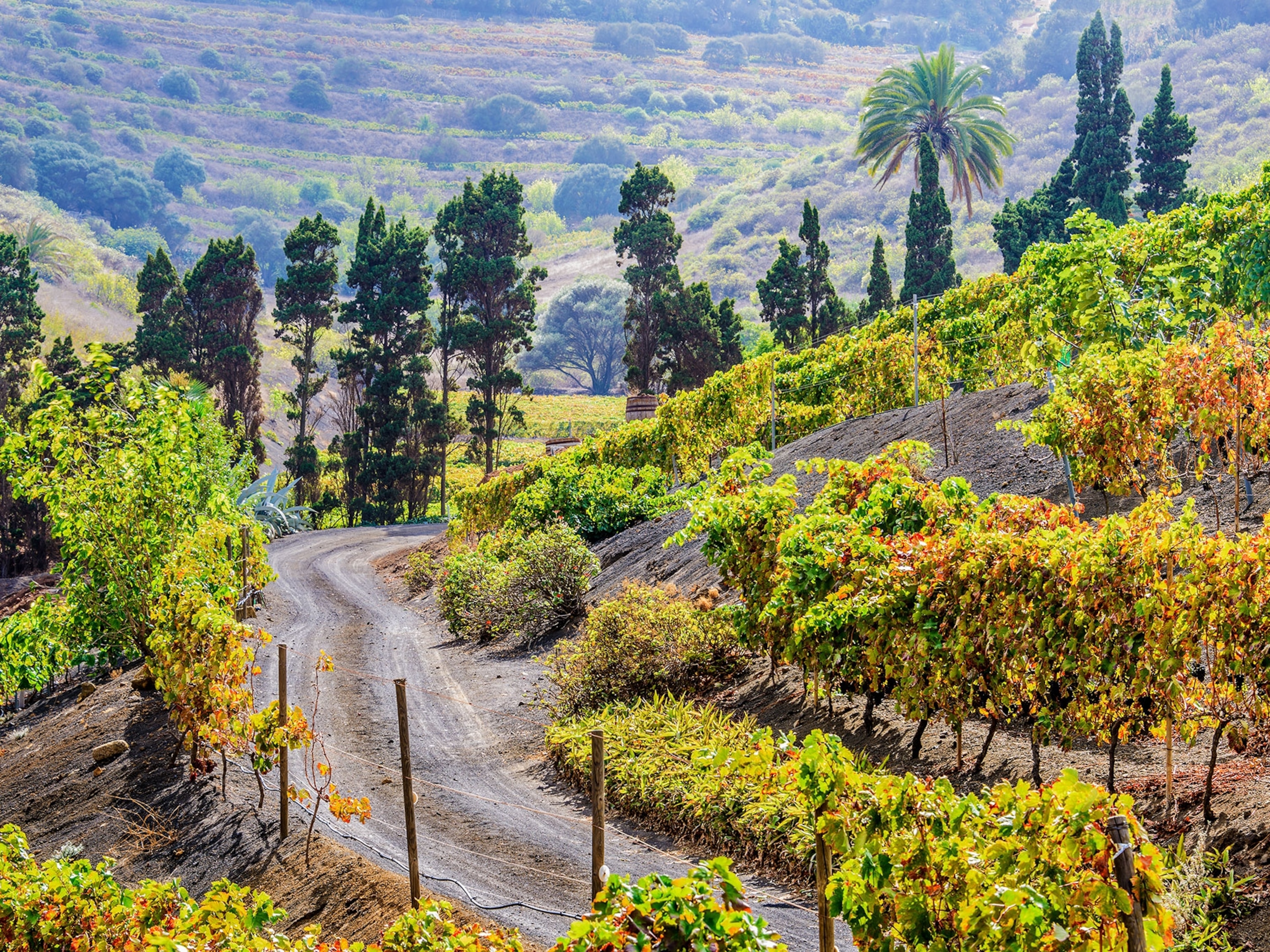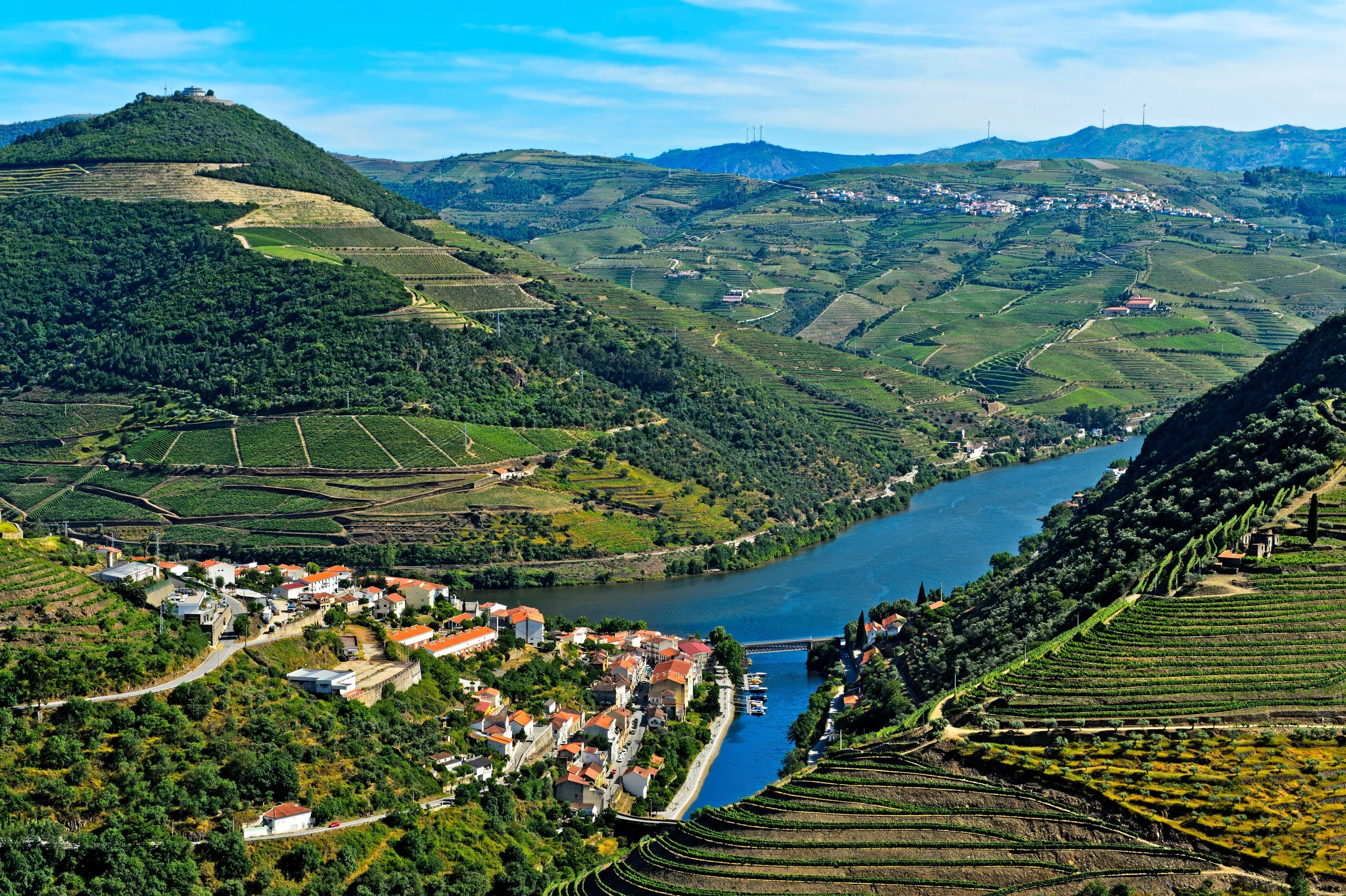
5 ways to discover Portugal’s Douro Valley, a destination ripe for wine lovers
The world’s oldest demarcated wine region, the Douro Valley has long been known for its fortified wines. But along with its newly claimed title of European Wine City 2023, this striking area is proving it offers much more than just port.
There are few wine regions in the world as instantly recognisable as Portugal's Douro Valley. Its vineyards rise in striking symmetry from the banks of the Rio Douro, which charts a 557-mile-long course across northern Portugal before spilling out into the Atlantic at Porto. The Alto (Upper) Douro lies at the sweet spot where the Marão and Montemuro mountains meet, shielding the land from unforgiving westerly winds. In doing so, they create ideal microclimates for the area's 250,000-odd hectares of vertiginous vineyards, yielding super-concentrated, deeply flavoured grapes.
Historically, the area has been heavily focused on the production of port, an industry that dates back to the 1386 Treaty of Windsor, which allowed Portuguese merchants in the Douro to begin freely shipping barrels of wine downriver and across the ocean to England. However, over the centuries, local winemakers have developed their vineyards to adapt to the area's natural conditions — from steep slopes to limited water resources — and their collective creativity has seen production flourish beyond just fortified wines. It's this expanding offering that's led the region to be named European Wine City for 2023, and there's never been a better time to explore the Douro's ever-developing viticulture. Here are five of the best ways to do it.
1. Enjoy a classic wine tasting
More than 80 varieties of grape grow in the Douro, with the lion's share of the harvest set aside for the ruby, tawny, white and rosé port wines that have made northern Portugal famous. However, winemakers in the region have been increasingly branching out beyond fortified wines, using red grapes historically bound for Port-making for dark and moody table wines instead. Ambers and whites — citrusy Arinto, perfumed Malvasia Fina, sparkling Espumante — also feature on an ever-evolving wine card.
There are more than 200 historic quintas (wine estates) in the Douro, the majority of which offer tastings and tours for visitors to learn more about the area's unique winemaking heritage. Visit and you'll find yourself enjoying vibrant oak-aged reds, elegant rosés made from Touriga Nacional and Tinta Roriz grapes and even freshly brewed craft beers, often accompanied by spectacular river views.
2. Head on a historic hike
Miles of gentle and graded trails wind through the Douro's signature tiered terraces and centenary olive groves before heading up into the hills and cork forests beyond. Trace old train tracks, detour to famous miradouro viewpoints — such as São Leonardo de Galafura in Peso da Régua and Ujo in Alijó — and stop at a quinta or two to sample the speciality of the house.
As you amble, keep your eyes peeled for some of the surviving marcos pombalinos, a series of 335 granite pillars erected in 1756 by the Marquis of Pombal. His mission to define the boundaries of the Douro appellation was considered draconian at the time, but it helped pave the way for the Alto Douro’s Denominação de Origem Controlada (DOC) status, making this the only place in the world that can legally produce Port.

3. Explore the river on a rabelo boat
The Douro’s first wine merchants relied on the river to spirit port barrels to their lodges in Porto, from where they were dispatched on to England. Today, a journey along this historic waterway remains one of the best ways to experience the area. Travel by rabelo, a flat-bottomed wooden boat with long oars specifically designed by the merchants to navigate the narrow river gorge. A rabelo ride is a classic add-on to a day's wine tour from Porto — but travellers spending longer in the area can hire one for a dedicated boat trip to explore more of of the Douro Superior.
4. Try a traditional farmer's lunch
The Douro’s winemaking heritage is complemented by a distinct regional cuisine, with artisanal products such as extra virgin olive oil produced in the nearby Trás-os-Montes mountains. Locally sourced ingredients — from almonds, figs and foraged mushrooms to river fish and lamb — dominate dining rooms across the valley.
For the best taste of traditional Douro cuisine, head to one of the many local quinta estates for a home-cooked farmer's lunch paired with their own table wines. Expect local specialities such as smoked sausage, veal in red wine, and lamb roasted in a wood stove, all washed down with a sample of speciality wines.
5. Enjoy a hands-on harvest experience
Visit the Douro between early September and mid-October for the annual vendimia grape harvest (weather permitting). Experience this ritual at one of the Douro’s more traditional estates, where special vendimia programmes allows visitors to interact with each step of the winemaking process up close. Pitch in to help pluck grapes by hand, then stomp them by foot to the rhythm of traditional music. Once you've earned your keep, pull up a seat at the family table for a well-deserved lunch. You'll find vendimia festivities across the Douro at this time, making the autumn months prime for a culturally immersive trip.
Direct flights to Porto International Airport depart from London, Bristol, Birmingham and Manchester. Join a guided Douro day tour from Porto or travel 2.5 hours by train to base yourself in the central town of Pinhão. Delve deeper into the valley with a tour, a ride on the MiraDouro scenic railway, or a road trip along the N222. For more information, visit cimdouro.pt
